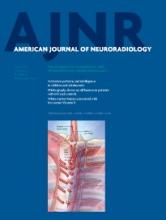Article Figures & Data
Tables
Strength of Evidence Criteria Used Strong Studies with broad generalizability to most patients suspected of having the disease; include prospective, blinded comparison of a diagnostic test with a well-defined final diagnosis in an unbiased sample when assessing diagnostic accuracy or blinded randomized control trials when assessing therapeutic impact or patient outcomes; also included are well-designed meta-analyses Moderate Prospective or retrospective studies with narrower spectrum of generalizability, with only a few flaws that are well-described so that their impact can be assessed but still include a blinded study of diagnostic accuracy on an unbiased sample (well-designed cohort or case-control studies) and randomized trials for therapeutic effects or patient outcomes Limited Diagnostic accuracy studies with several flaws in research methods, small sample sizes, incomplete reporting, or nonrandomized comparisons for therapeutic impact or patient outcomes Insufficient Studies with multiple flaws in research methods, case series, descriptive studies, or expert opinions without substantiating data Study Name Validation of the Imaging Biomarker Testing a Treatment on the Basis of Selection of Patients with an Imaging Biomarker DIAS,28 DEDAS,29 DIAS-2,30 IV tenecteplase,44,a No Yes DEFUSE,31 DEFUSE-2,32,33 Yes No EPITHET,34 MR-RESCUE35 Yes Yes ↵a This trial required intracranial vessel occlusion on CTA and CTP mismatch for randomization.












